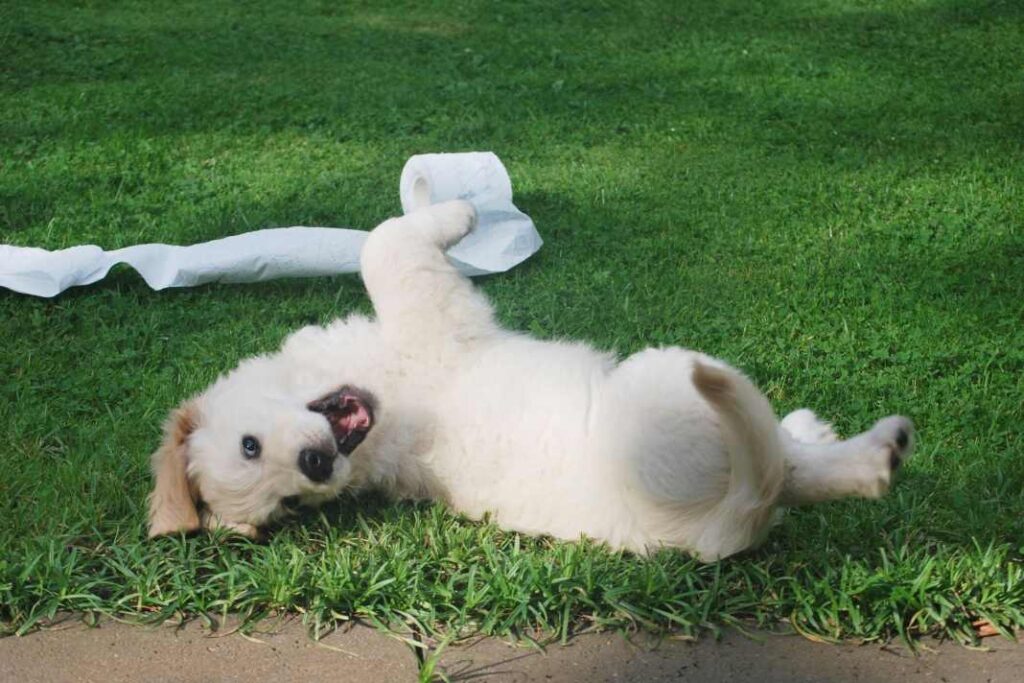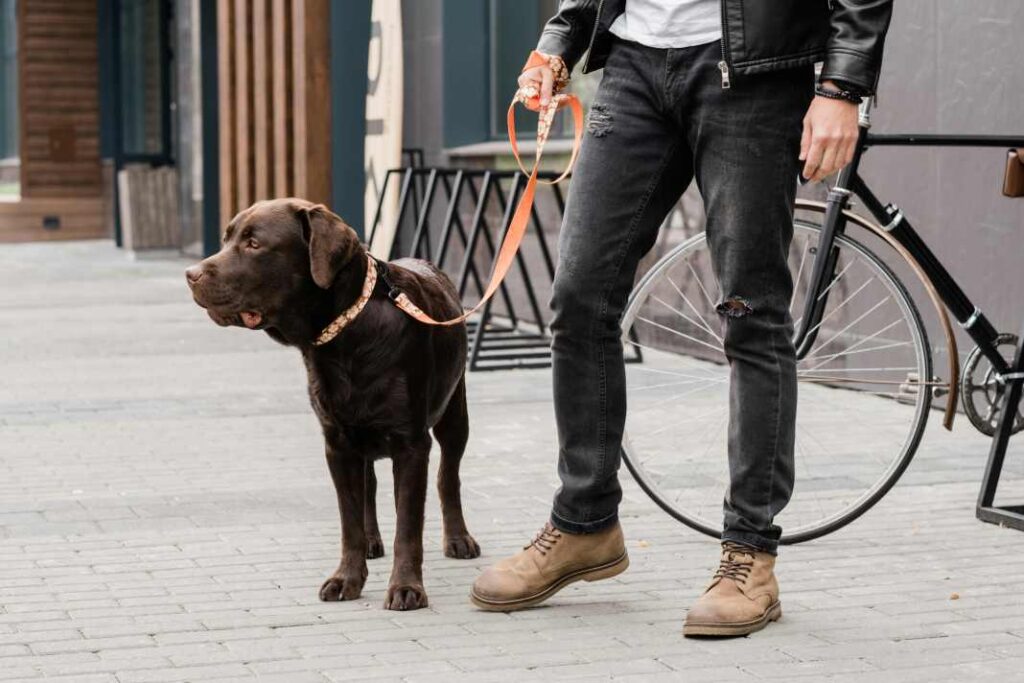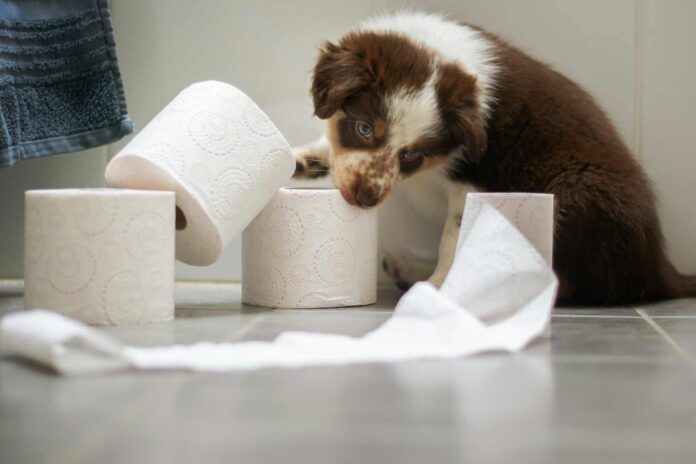Mastering puppy potty training is crucial for fostering a strong bond, reducing stress, and promoting good behavior, and this article provides effective techniques, tips, and solutions for successful house training.
If you don’t have time to read this and just want a puppy potty training solution fast, check out this online Potty Training course. At the time of writing this, it was a 3-day $1 Trial – so you could effectively sign up and learn all you can in 3 days, all for $1.
Introduction to the Significance of House Training Your Puppy
House training is a crucial aspect of bringing a new puppy into your home. It plays a vital role in fostering a strong bond between you and your puppy, enhancing the overall quality of life for both of you.
Effective house training not only contributes to the mental and emotional well-being of your puppy by reducing stress and anxiety but also helps establish a routine and structure, promoting good behavior and obedience. A well-trained puppy is a happy puppy, and a happy puppy makes for a happy home.
House training your new puppy is the first step to a harmonious home
Imagine a scenario where a new puppy owner begins the house training process with patience and consistency. Through effective training, the puppy learns to understand where it’s appropriate to go potty, leading to fewer accidents inside the home and a more harmonious living situation. This early success in house training lays the foundation for a lifelong bond between the puppy and its owner.
The Importance of Early and Consistent Training for Puppies
Puppies, with their limited bladder capacity, require frequent bathroom breaks to avoid indoor accidents. Starting house training early and maintaining consistency in the training process are key to helping puppies understand boundaries and expectations.
This leads to quicker and more successful house training outcomes. Additionally, early socialization and training can prevent behavioral issues in puppies as they grow into adult dogs.
For example, a puppy that begins crate training and learns the routine of going outside for bathroom breaks at an early age will become accustomed to this behavior, making the process smoother.
Early and consistent training, like taking the puppy out first thing in the morning, after meals, and before bedtime, will help the puppy learn faster and reduce the frequency of accidents.

Effective Techniques for House Training Your Puppy
Crate Training Benefits
Crate training takes advantage of a puppy’s natural instinct to seek out a cozy, den-like space for security. It reduces anxiety and provides a sense of security during the house training process.
Additionally, crate training can help prevent destructive behaviors in puppies when they are left unsupervised. For instance, a puppy kept in a crate when alone will wait to be let outside to eliminate instead of having an accident indoors.
Leash Training for Potty Breaks
Using a leash during potty breaks helps puppies stay focused and reduces distractions, making the training more effective. It can also teach puppies to associate specific outdoor areas with bathroom breaks, reinforcing good habits.
For example, a puppy that is consistently taken to the same spot in the yard on a leash will begin to associate that spot with going potty, aiding in quicker training.

Positive Reinforcement Methods
Positive reinforcement, such as treats, praise, or playtime, motivates puppies to repeat desired behaviors like going potty outside.
Consistent use of positive reinforcement techniques creates a positive association with outdoor bathroom breaks for puppies.
A puppy that is praised and rewarded every time it goes outside will be more likely to repeat this behavior.
Tips for Successful House Training and Potty Training
One of the most effective strategies for successful house and potty training is establishing a consistent routine that your puppy can rely on. Just like humans, puppies thrive on routine. It helps them understand what is expected of them and when.
This means setting regular times for feeding, going outside for potty breaks, and playtime. For instance, taking your puppy outside first thing in the morning, after meals, and before bedtime can significantly reduce the likelihood of accidents inside the house. Tips for house training your puppy:
- Establish a routine for your puppy, including regular feeding times and bathroom breaks.
- Take your puppy outside frequently, especially after waking up, playing, and eating.
- Pick a specific bathroom spot outside and use a cue word or phrase while they eliminate.
- Reward your puppy immediately after they eliminate outdoors to reinforce good behavior.
- Put your puppy on a regular feeding schedule to regulate their bathroom times.
- Remove water two and a half hours before bedtime to reduce nighttime accidents.
Puppies thrive on knowing what’s expected: regular feedings, potty breaks, and playtimes.
In addition to a consistent routine, using a specific command or cue word during potty breaks can greatly assist in the training process. This could be a simple phrase like “go potty” or “time to wee,” used consistently every time you take your puppy outside for a bathroom break.
Over time, your puppy will start to associate this cue with the act of eliminating outdoors, reinforcing the desired behavior. Keeping a potty training journal can also be incredibly beneficial. By logging the times your puppy eats, plays, sleeps, and goes potty, you can identify patterns and adjust your routine accordingly.
For example, if you notice your puppy tends to have accidents shortly after eating, you can adjust your schedule to take them outside sooner after meals.
This proactive approach allows for more efficient training and helps identify the best times for bathroom breaks, thus making the entire house training journey more predictable and manageable.
Common Mistakes to Avoid During Puppy House Training
One of the significant pitfalls during the house training journey is resorting to punishment when a puppy has an accident indoors. This approach can instill fear and anxiety in the puppy, which is counterproductive to the learning process.
Puppies are in a critical phase of building trust with their owners, and negative reinforcement can damage this budding relationship. For example, a puppy reprimanded for an indoor accident might start eliminating in hidden spots to avoid punishment, making it harder to break this undesired behavior.
Avoid punishment during house training—it can build fear, not trust, in puppies
Another common mistake is inconsistency in training methods or schedules, which can significantly confuse your puppy and impede the training progress. Just like humans, puppies thrive on routine.
When the house training schedule fluctuates or when different family members use varying commands and rewards, it can lead to mixed signals for the puppy. This inconsistency makes it difficult for them to understand what is expected, thereby slowing down the learning curve.
Additionally, overfeeding or not sticking to regular feeding times can disrupt a puppy’s natural bathroom schedule, leading to more frequent and unpredictable accidents indoors. It’s essential to maintain a consistent feeding schedule to regulate their digestion and subsequent elimination habits, aligning these with their training routine for optimal results.
Addressing House Training Challenges and Solutions
When you encounter challenges in house training your puppy, it’s essential to seek professional guidance. Consulting with a veterinarian or a certified dog trainer can unveil personalized strategies tailored to your puppy’s specific needs and circumstances.
For instance, if your puppy struggles with anxiety, a professional might suggest additional crate training techniques or anxiety-reducing exercises to help them feel secure. This personalized approach can significantly enhance the effectiveness of your training efforts, making the house training process smoother for both you and your puppy.
Consider aids like pee pads for tricky living situations, and remember, a strong bond is the best foundation.
In addition to professional advice, implementing a reward system for successful potty breaks can be highly effective. Positive reinforcement, such as offering treats, praise, or playtime immediately after your puppy eliminates outside, reinforces good behavior.
This method not only encourages your puppy to repeat the desired behavior but also strengthens the bond between you. For puppies living in environments where outdoor access is limited, such as high-rise buildings, training aids like pee pads or artificial grass can prove invaluable.
These aids provide a designated spot for your puppy to relieve themselves, facilitating the training process. The key is to gradually transition from these aids to regular outdoor potty training breaks as your puppy becomes more comfortable with the idea.
Conclusion: Mastering Puppy Potty Training
Consistency, patience, and the strategic use of positive reinforcement stand out as the cornerstone principles for effectively house training puppies.
A consistent routine not only helps your puppy to learn faster but also provides them with the structure they need to feel secure and understand what is expected of them. For instance, establishing regular feeding times, potty breaks, and play sessions can significantly streamline the house training process, making it easier for the puppy to adapt and adhere to the rules of the home.
Patience is equally critical, as puppies learn at their own pace, and there will inevitably be accidents and setbacks along the way.
Regular routines, understanding each puppy’s pace, and rewarding good behavior pave the way for success.
The role of positive reinforcement cannot be overstated in the context of house training. Rewarding your puppy with treats, praise, or playtime immediately after they have successfully gone to the bathroom outside reinforces the behavior you want to see.
This approach not only accelerates the learning process but also strengthens the bond between you and your puppy, making the training experience more enjoyable for both parties involved.
It is also crucial to tailor your training approach to your puppy’s unique personality and learning style. Some puppies may respond better to certain types of rewards or training methods than others.
Recognizing and celebrating even the smallest progress is important for maintaining motivation and fostering a positive training environment.
By adhering to these key strategies and steering clear of common training mistakes, such as punishment for accidents or inconsistency, you can lay the groundwork for a well-trained puppy who will bring joy and companionship to your home for years to come.
Tailor approaches to their unique style & celebrate every milestone. Avoid punishment, aim for a joyful learning journey together!
Check out this online Potty Training course. At the time of writing this, it was a 3-day $1 Trial – so you could effectively sign up and learn all you can in 3 days, all for $1.
Related Puppy Training Topics:
Transform Your Dogs Behavior with The Online Dog Trainer: A Guide to Effective Training




